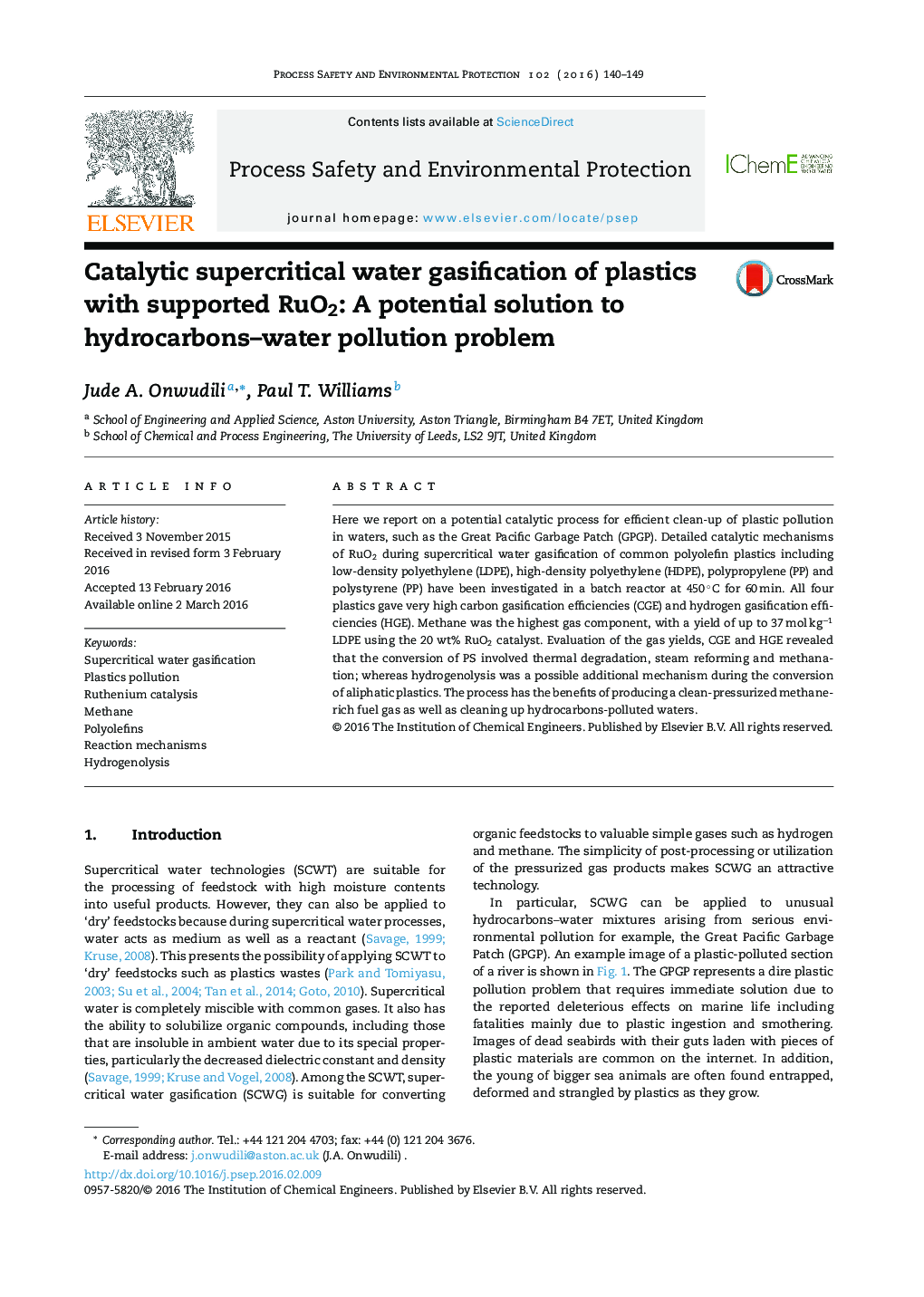| Article ID | Journal | Published Year | Pages | File Type |
|---|---|---|---|---|
| 588069 | Process Safety and Environmental Protection | 2016 | 10 Pages |
•RuO2 catalyst was active for the gasification of plastics in supercritical water.•CGE of up to 99 wt% and HGE of over 100 wt% were achieved with 20 wt% RuO2.•Methane, hydrogen and carbon dioxide were the major gas products.•Detailed catalytic reaction mechanisms have been proposed for SCWG of plastics.•Catalytic process led to hydrocarbons clean-up in water and fuel gas production.
Here we report on a potential catalytic process for efficient clean-up of plastic pollution in waters, such as the Great Pacific Garbage Patch (GPGP). Detailed catalytic mechanisms of RuO2 during supercritical water gasification of common polyolefin plastics including low-density polyethylene (LDPE), high-density polyethylene (HDPE), polypropylene (PP) and polystyrene (PP) have been investigated in a batch reactor at 450 °C for 60 min. All four plastics gave very high carbon gasification efficiencies (CGE) and hydrogen gasification efficiencies (HGE). Methane was the highest gas component, with a yield of up to 37 mol kg−1 LDPE using the 20 wt% RuO2 catalyst. Evaluation of the gas yields, CGE and HGE revealed that the conversion of PS involved thermal degradation, steam reforming and methanation; whereas hydrogenolysis was a possible additional mechanism during the conversion of aliphatic plastics. The process has the benefits of producing a clean-pressurized methane-rich fuel gas as well as cleaning up hydrocarbons-polluted waters.
Graphical abstractFigure optionsDownload full-size imageDownload high-quality image (201 K)Download as PowerPoint slide
